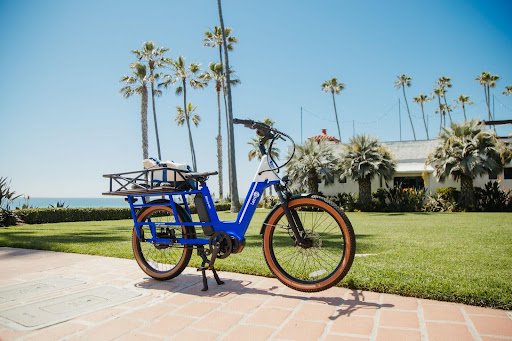Cities are offering subsidies for electric cargo bikes because they cut traffic, pollution, and noise—while replacing short car trips at a much lower cost than building more roads or parking spaces. Families and small businesses actually use them, so the payoff for public spending shows up fast. Charging is simple, too: most batteries top off in 3–6 hours with a regular charger, while larger ones take 4–8 hours. That extra battery capacity gives more range for things like school drop-offs or delivery runs.
The case for public support: simple math, big payoff
Most city trips are short—usually just two to five miles—and that’s exactly where an electric cargo bike shines. One bike can replace dozens of car trips every week, cutting traffic without adding new lanes or parking garages. Right away, there’s less noise and fewer emissions. Because electric cargo bikes are cheaper to buy and maintain than cars, even small rebates help families decide to skip that second vehicle. For cities, that’s a big climate win for a small price tag.
How an electric cargo bike changes daily trips
The biggest benefits show up in everyday errands—things like school drop-offs, grocery runs, soccer practice, or quick hardware store visits. These short, familiar trips don’t really need a car. An electric cargo bike can carry 100–200 pounds easily, squeeze through traffic, and park right at the door. For businesses, it makes last-mile deliveries faster in crowded areas where van parking is a hassle. Once people realize they can haul kids, groceries, and gear all in one go, that “extra car” often starts collecting dust. That’s the change cities are aiming for with these subsidies.
What makes a long-tail Cargo eBike city-ready
A long-tail Cargo eBike stretches the rear rack over a longer wheelbase. This keeps the weight balanced and makes steering steadier, even when kids are wiggling around in back. Wide, puncture-resistant tires smooth out rough roads, and big hydraulic brakes (180–203 mm) handle heavy loads safely. Mid-drive motors keep the weight low and centered, giving you strong, steady power for climbing hills. Add-ons like running boards, child seats with proper weight ratings, weather canopies, and a sturdy center kickstand turn a capable bike into a dependable daily hauler.
Charging, range, and battery life
You can expect a regular 500–700 Wh battery to charge in about 3–6 hours, and bigger cargo-bike batteries to take around 4–8 hours. With moderate pedal assist and city riding speeds, most families get 20–40 miles per charge while carrying kids, or 30–60 miles for mixed errands. Businesses that ride all day often keep an extra charger at work or swap in a spare battery to avoid downtime. To make batteries last longer, store them half full (about 50–80%) if you won’t ride for a week or more, and avoid extreme heat or freezing temps.
Why subsidies work better with smart design
Not all subsidy programs perform the same. The best ones usually share three things:
Point-of-sale rebates: The discount shows up right on the sales receipt, so buyers don’t need to pay hundreds upfront or wait weeks for a refund.
Equity targeting: Bigger rebates go to lower-income families, caregivers, or small business owners who rely on deliveries. That’s where these bikes replace the most car miles.
Clear eligibility: Programs list the required safety features—UL-certified batteries and chargers, hydraulic disc brakes, cargo-rated frames, and approved passenger accessories—so everyone knows what qualifies.
Cities get even more out of these programs when they offer simple training. A short “cargo 101” class that covers loading heavy items low, braking smoothly, and teaching kids to climb on safely builds confidence and helps new owners avoid accidents early on.
Safety, streets, and parking: the policy multipliers
Subsidies make the biggest impact when cities also create safe places to ride. Quick improvements like protected bike lanes near schools and shops, slower “neighborhood streets,” and bike parking near stores (five e-bikes can fit where one car does) all help. To prevent theft, small grants for secure storage—like shed rebates, indoor racks, or shared lockers—protect public investment. Finally, clear speed limits and rider education programs keep things safe for everyone. When people ride predictably and respectfully, the community stays on board.
Business use: last-mile speed without the van headache
For cafes, florists, pharmacies, or couriers, circling for parking eats up time and money. A good cargo bike skips that stress and reaches more customers faster in busy downtowns. Deliveries get done sooner, customers are happier, and costs drop—no gas, less maintenance, and no parking tickets. That’s why many cities extend rebates to small business owners or delivery services. Just a few subsidized bikes can change how deliveries work in a whole neighborhood.
What to look for before you buy a Cargo Ebike
To make sure subsidies support quality gear, shoppers should check for:
- A frame that clearly lists total weight and passenger limits
- Hydraulic brakes with large rotors for stopping safely under load
- UL-certified battery and charger, plus local service support
- Add-ons like child seats, running boards, and a solid center kickstand that lock in securely
- A proper test ride—make sure you can start uphill and handle the bike at low speed with bags or passengers on board
(If you want to keep it simple, start with a long-tail Cargo eBike and add accessories later. Front-loaders are great for bulky boxes, and trailers work well if you only haul big stuff occasionally.)
How residents usually qualify
Most rebate programs just ask for proof that you live in the city, an invoice from an approved retailer, and sometimes a quick safety course or registration form. Keep your bike’s serial number and battery details handy. If your city offers both income-based and general rebates, try for the income-based one first—it’s meant to make ownership affordable for more families.
Final Thought
Helping people buy electric cargo bikes is one of the smartest things cities can do. It’s a fast, affordable way to get cleaner air, calmer streets, and easier travel for families and small businesses—without waiting years for new infrastructure. With fair rules, safe streets, and a focus on access, every rebate leads to hundreds of car-free trips a year and helps families skip that second car payment. Add in quick charging (3–6 hours for most batteries), strong brakes, and family-ready accessories, and you’ve got a policy that makes sense from day one and keeps delivering for years.

